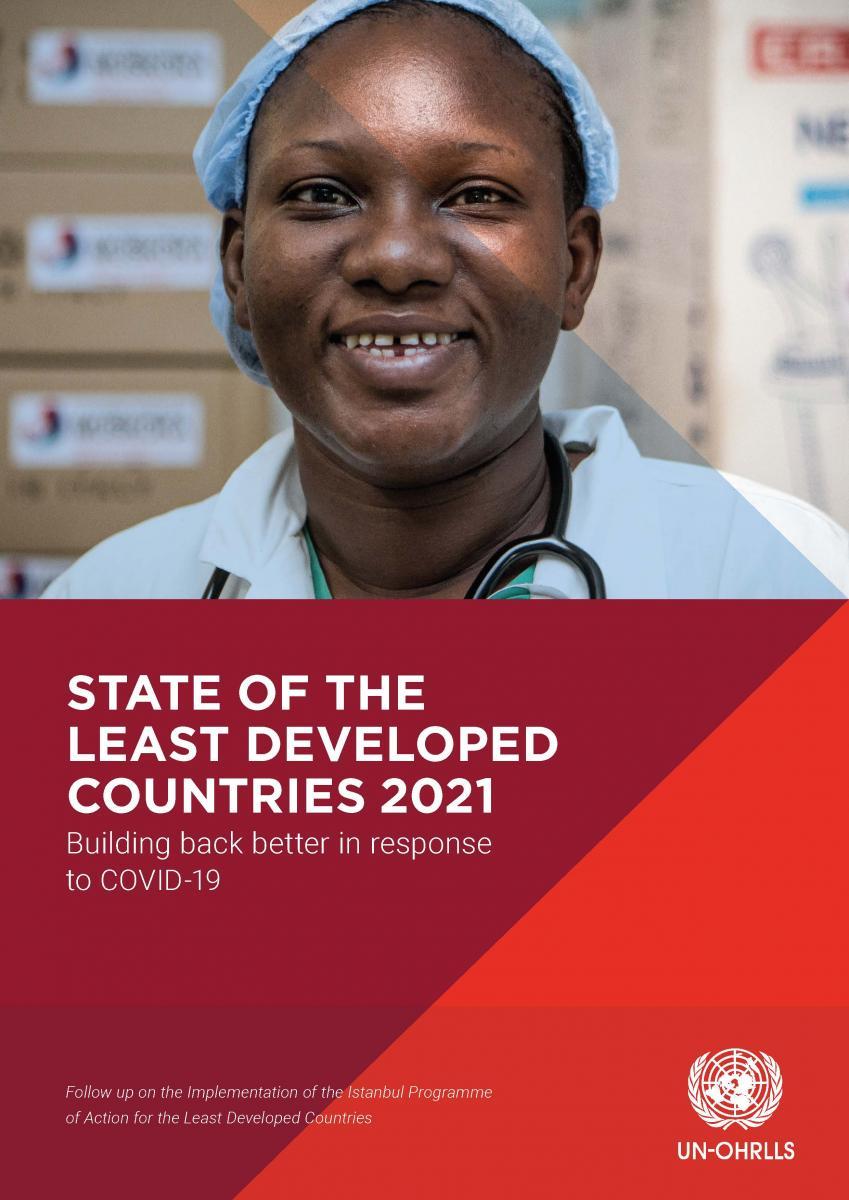State of the Least Developed Countries 2021. Building back better in response to COVID-19

The State of the Least Developed Countries 2021 report is a comprehensive assessment of where the Least Developed Countries (LDCs) stand a year into the COVID-19 pandemic. The report calls for a global coordinated response for LDCs that goes beyond recovery, ensuring that the most vulnerable countries can both get their development back on track and better prepare for future crises.
The report provides recommendations where actions are most needed - from investment in people to sustainable structural transformation and the use of technologies to the mobilization of finance.
These recommendations go well beyond recovery from COVID-19, but their implementation would ensure that LDCs can also enhance resilience to future shocks and accelerate the achievement of their development goals.
COVID-19 in the LDCs
While COVID-19 cases seemed relatively low in LDCs at the beginning of the pandemic, they picked up in several countries towards the end of 2020. Currently, as many countries deal with a spike in cases, many fresh waves are taking place in countries with an already critical political, humanitarian or economic situation.
The rate of extreme poverty in LDCs was about 35.1 per cent in 2018, before the pandemic struck. Early data on the impact of the pandemic on poverty show that figure growing, wiping out years of progress made in alleviating poverty. Due to their over-representation in the labour-intensive, low-skilled activities that were most affected by lockdowns, women were most severely affected.
The report notes that the urgent support needed by LDCs is significant, as the amounts they have been able to spend on damping down the pandemic have been significantly lower. Most LDCs have increased public spending but the size of these fiscal packages were much lower than in other developing countries and the developed world. In fact, LDCs managed to increase direct and indirect fiscal support by only 2.6 per cent of their GDP in 2020, compared to, on average, 15.8 per cent of developed countries’ much larger GDPs.
Response Measures
Central to the COVID-19 response is plugging the gaps that made it difficult for LDCs to mount strong pandemic measures and ensuring that the most marginalised communities are supported with the basic infrastructure to stay engaged in production, education and healthcare.
Rural areas in particular need greater investment in services and financial instruments that target producers’ organisations like credit guarantee funds that can support investment plans and increase productivity.
COVID-19 saw millions of young people unable to access education, and while several LDCs have increased access to remote learning platforms, many more remain without electricity, internet or appropriate devices. These learning inequalities, widened by the pandemic, must also be tackled as a matter of urgency if this is not to become a lost generation.
Similarly, access to clean, affordable energy will be critical to supporting LDCs to grow production. Energy transition investment can help reinvigorate the economy, support the recovery phase, and create a wide range of jobs.
LDC5
The report is published in advance of the Fifth UN Conference on the Least Developed Countries (LDC5). LDC5, to be held in Doha in March 2023, is where the international community will take stock of progress and challenges made in LDCs over the past decade and enact an ambitious new ten-year programme to accelerate development.

